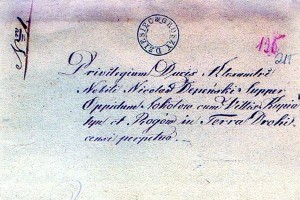 Sokolow is the oldest city in the historical region of Podlasie with long and interesting history. The municipal rights under German Sroda law were provided to Sokolow on 20th April, 1424 from Witold – the Grand Prince of Lithuania.
Sokolow is the oldest city in the historical region of Podlasie with long and interesting history. The municipal rights under German Sroda law were provided to Sokolow on 20th April, 1424 from Witold – the Grand Prince of Lithuania.
Mikolaj Sepienski, the trusted secretary, diplomat and advisor of the prince, managed to provide the rights to the city. Earlier, in 1415, he founded the first catholic Sokolow temple. At the beginning of the sixteenth century, the city came into the hands of the mighty Kiszka family, in the seventeenth century the city was in possession of the Radziwill family, and since 1664, in the possession of the Krasinscy family. The economic, social and religious face of the city changed Poles, Russians and Jews inhabited the city. The church, the orthodox church (then the uniate) and the synagogue functioned. In 1569, the city along with the Podlasie Viovodeship went from Lithuania to the Crown under the Polish-Lithuanian Commonwealth.
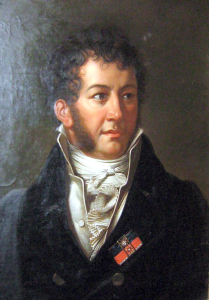 In the eighteenth century among the successive owners we can find Tadeusz Lipski and the Oginscy family – Ignacy, Andrzej and Michal Kleofas. One of the most important contemporary communication routes from Warsaw to Vilnius, called the Great Lithuania Highway, ran through Sokolow. Since 1767, one of the postal stations serving this route functioned here. In 1761 Ignacy Oginski obtained a royal privilege of defining market days and fairs. In turn, Michal Kleofas, including famous composer (creator of the polonaise Farewell to the motherland) attempted to develop the city by setting up a weaving manufactory, involving the workers from the French city of Montbeillard. In addition, he hosted in his court in Przezdziatka King Stanislaw August Poniatowski, returning from the parliament in Grodno in 1793. It is worth noting that another ruler, who previously lived in Sokolow in 1581, was Stefan Batory.
In the eighteenth century among the successive owners we can find Tadeusz Lipski and the Oginscy family – Ignacy, Andrzej and Michal Kleofas. One of the most important contemporary communication routes from Warsaw to Vilnius, called the Great Lithuania Highway, ran through Sokolow. Since 1767, one of the postal stations serving this route functioned here. In 1761 Ignacy Oginski obtained a royal privilege of defining market days and fairs. In turn, Michal Kleofas, including famous composer (creator of the polonaise Farewell to the motherland) attempted to develop the city by setting up a weaving manufactory, involving the workers from the French city of Montbeillard. In addition, he hosted in his court in Przezdziatka King Stanislaw August Poniatowski, returning from the parliament in Grodno in 1793. It is worth noting that another ruler, who previously lived in Sokolow in 1581, was Stefan Batory.
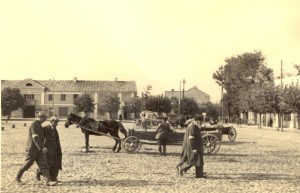 As a result of the loss of independence, the city changed the territorial affiliation. It was a part of Austria (1795 – 1809), the Duchy of Warsaw (1809 – 1815), and then it was incorporated into the Kingdom of Poland subordinate to Russia. In the Russian partition it functioned until the beginning of the World War I. In that time, it changed its successive owners and was transformed. Sokolow became the property of the Kobylinscy family (Charles, and then Seweryn). In turn, Seweryn Kobylinski sold it in November 1843 to Elizabeth Hirschman. The person was involved in the sugar plant establishment, which was a factor of development and the beginning of industrialization.
As a result of the loss of independence, the city changed the territorial affiliation. It was a part of Austria (1795 – 1809), the Duchy of Warsaw (1809 – 1815), and then it was incorporated into the Kingdom of Poland subordinate to Russia. In the Russian partition it functioned until the beginning of the World War I. In that time, it changed its successive owners and was transformed. Sokolow became the property of the Kobylinscy family (Charles, and then Seweryn). In turn, Seweryn Kobylinski sold it in November 1843 to Elizabeth Hirschman. The person was involved in the sugar plant establishment, which was a factor of development and the beginning of industrialization.
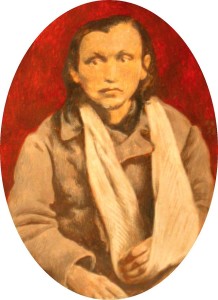 During the subsequent national uprisings, the residents of the city took part in the battles for independence. A particular period of history was the January uprising and the execution of Fr. Stanislaw Brzoska and his aides Franciszek Wilczynski on Sokolow square on 23rd May, 1865 by the Russian invaders. From this tragic moment, Fr. Brzoska and uprasing traditions firmly rooted to the insurgent and awareness of Sokolow history.
During the subsequent national uprisings, the residents of the city took part in the battles for independence. A particular period of history was the January uprising and the execution of Fr. Stanislaw Brzoska and his aides Franciszek Wilczynski on Sokolow square on 23rd May, 1865 by the Russian invaders. From this tragic moment, Fr. Brzoska and uprasing traditions firmly rooted to the insurgent and awareness of Sokolow history.
A very important date for the city is the year 1867. From its beginning, Sokolow became the property of the state and became the seat of the newly created Sokolow county. An important moment from an economic point of view was to bring the railway line in 1887 and connection to the network of railways of the rest of the country.
During the World War I, the city suffered from predatory policy of the Russian government (1914 – 1915) and the German government (1915-1918). In August 1920, it was occupied by the Soviets, on 19th August it was recovered the Polish troops.
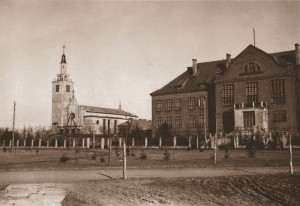 During the Second Republic a significant event was coming of Salesians in 1925 and acquisition of the local grammar school and the construction of the church by them. Sokolow was widely known in the circles of the Jewish population because of the activities of one of the greatest tzaddikim – Isaac Zelig Morgenstern.
During the Second Republic a significant event was coming of Salesians in 1925 and acquisition of the local grammar school and the construction of the church by them. Sokolow was widely known in the circles of the Jewish population because of the activities of one of the greatest tzaddikim – Isaac Zelig Morgenstern.
The tragic years of the World War II brought the greatest suffering of the people and the 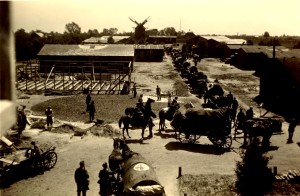 war’s destruction. In September 1939, Germans, then the Soviet army, and then again on 8th October the German army entered Sokolow. The city was under their occupation until August 1944. The fight against the occupying forces was taken by conspiratorial organizations for independence led by the Union of Armed Struggle – the National Army. As part of its Sokolow structures, the circuit named “Sep-Proso” worked. One of the most famous conspirators became Henryk Oleksiak, named “Wichura”, killed in 1943 in Paulinow. The German occupier killed the Jewish population in 1942.
war’s destruction. In September 1939, Germans, then the Soviet army, and then again on 8th October the German army entered Sokolow. The city was under their occupation until August 1944. The fight against the occupying forces was taken by conspiratorial organizations for independence led by the Union of Armed Struggle – the National Army. As part of its Sokolow structures, the circuit named “Sep-Proso” worked. One of the most famous conspirators became Henryk Oleksiak, named “Wichura”, killed in 1943 in Paulinow. The German occupier killed the Jewish population in 1942.
On 9th August 1944 the Soviet troops entered the city, before (at night of 26th/27th July), bombed by the air force. As a result of a Soviet air raid, inter alia, church of St. Michael the Archangel burned down. The stalwart soldiers took fighting with the communist authorities imposed by foreign troops. On Sokolow Earth famous 6th Vilnius Brigade Army fought until the early 50s of the twentieth century.
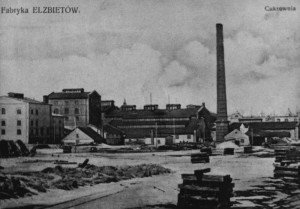 In the difficult post-war period there was reconstruction from the devastation of war. In 1951 the sugary plant was re-run, the church was rebuilt, and in the 70s of the twentieth century the modern meat plants were established. After the changes in 1989, Sokolow Podlaski, like other cities of free Poland, stepped on the path of self-government. Decentralization of State gave a lot of things in the hands of the local governments. The city changed economically and socially. Its inhabitants, their concerns, problems and joys changed as well. Sokolow residents remember the history of their city and try to put the effort in its development.
In the difficult post-war period there was reconstruction from the devastation of war. In 1951 the sugary plant was re-run, the church was rebuilt, and in the 70s of the twentieth century the modern meat plants were established. After the changes in 1989, Sokolow Podlaski, like other cities of free Poland, stepped on the path of self-government. Decentralization of State gave a lot of things in the hands of the local governments. The city changed economically and socially. Its inhabitants, their concerns, problems and joys changed as well. Sokolow residents remember the history of their city and try to put the effort in its development.

